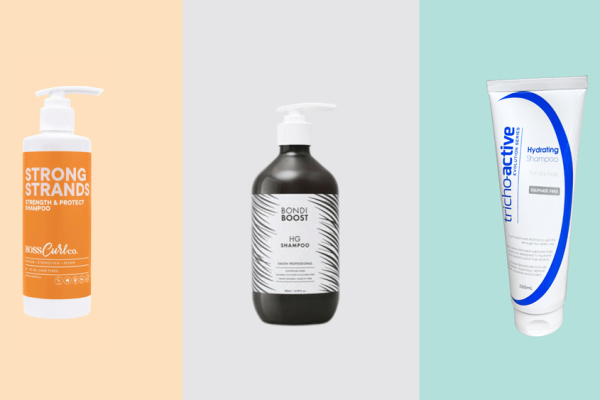What to look for in a hair loss shampoo
Hair loss is a common problem for people of all ages and genders. At least 50% of women will have some kind of hair loss by age 50. Up to 40% of men will experience hair loss by age 35, increasing up to 70% of men in later life [1].
Hair loss treatments vary depending on the cause of your hair loss and how advanced it is. However, shampoo can play a big role in making sure your hair and scalp are healthy.
Here we examine some shampoos that may either prevent hair loss or help reduce its impact.
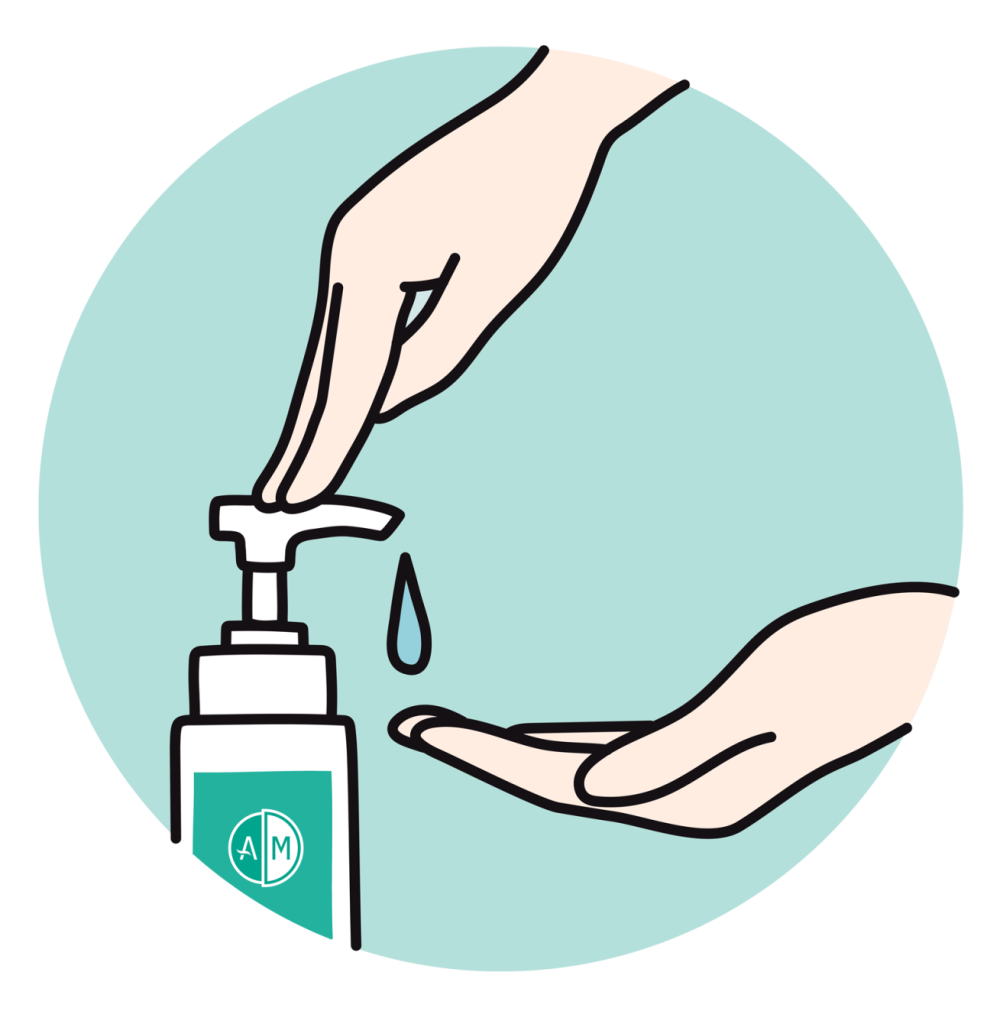
How can shampoo help with hair loss?
A hair loss shampoo on its own won’t stop or reverse a hair loss condition [2]. But it can help cleanse the scalp, strengthen existing hair, and create volume to mask some hair loss and promote the growth of thicker, healthier hair.
It’s also important to wash your hair regularly so your head stays clean and to prevent various scalp conditions from developing.
You should gently massage the shampoo into the scalp and not directly into the shaft of the hair. When you rinse, let the shampoo flow through your hair to clean it [3].
Finally, make sure you always use a conditioner. It helps make the hair softer and reduces breakages when you’re combing. Try to dry your hair naturally by patting with a towel rather than using heat or tying it up.
When used in combination with a medical hair loss treatment, a clean scalp can help encourage hair fibre production.
Science or snake oil? Ingredients to watch out for
Some shampoos may include ingredients like caffeine. While it sounds promising, there isn’t yet a lot of evidence that it works to reduce thinning hair. In 2018, the UK Advertising Standards Authority ruled that a German shampoo with caffeine in it had to stop advertising that its shampoo reduced hair loss as they found no evidence.
Another ingredient that is often included is saw palmetto, which is an extract from palm tree berries. This herbal remedy has shown promise to help regrow hair when taken orally [4]. However, there isn’t a lot of evidence that it would have an impact when applied as a topical solution.
Another ingredient to avoid is drying alcohols like isopropyl alcohol which can strip your hair of moisture.
You may want a hair loss shampoo that is sulfate free. Sulfates like sodium lauryl sulfate are strong cleansing agents which can irritate and damage some hair [5].
The best hair loss shampoos in 2023
Here are some of our favorite hair loss shampoos available in Australia that you could try:
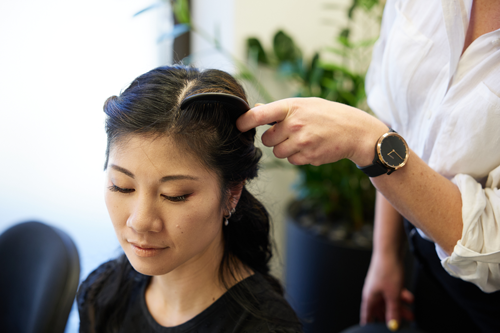
Aveda Invati Advanced™ Exfoliating Shampoo
Aveda’s Invati Advanced™ Exfoliating Shampoo has won awards for being one of the best shampoos for hair loss sufferers. They recommend using the shampoo as part of a system, which includes conditioner and a scalp revitaliser.
They say when their shampoo is used for 12 weeks as part of the hair loss system, it can reduce hair loss because of breakage from brushing by 53%.
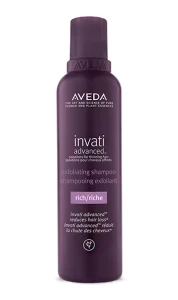
Aveda Hair Loss Shampoo
Sukin Volumising Shampoo
Sukin’s Volumising Shampoo uses natural ingredients like rice protein and pineapple extract to help add volume to limp hair. It is free from sulfates, silicones and harsh chemicals which can dry out your hair.
Although not a specific hair loss shampoo, it promises to clean the scalp and add volume, which can help camouflage hair loss. Sukin is an Australian made product that uses natural ingredients and is cruelty free.
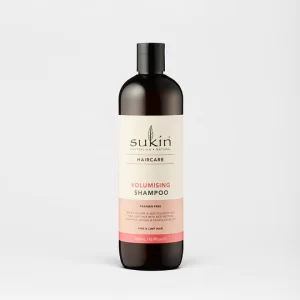
Sukin Hair Loss Shampoo
Ashley & Martin Tricho-Active Shampoos
Ashley & Martin has a range of pH balanced sulphate free shampoos and conditioners designed to keep your scalp healthy and hair fresh and clean. Botanical extracts such as birch, nettle, linden flower, rosemary, sage and horsetail leaf help promote healthy hair growth. You choose the shampoo that best suits your hair and scalp health concerns, including extra volume, anti-dandruff or hydrating.
These shampoos are designed to prepare the scalp for treatment as part of Ashley & Martin’s complete care hair regrowth programs, so are only available to Ashley & Martin clients.

Ashley and Martin Hair Loss Shampoo
Boss Curl Co Strength Shampoo
If your hair is naturally curly, this is the hair strengthening product for you. This shampoo promises to clean your locks gently while also protecting hair follicles against breakage and split ends.
Boss Curl Co products are vegan or vegetarian, cruelty free and CG approved.
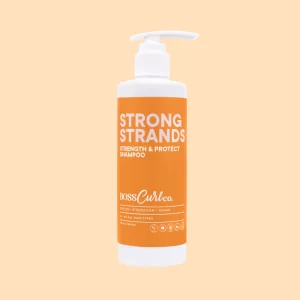
Boss-Curl-Hair-Loss-Shampoo
OGX Thick & Full Biotin & Collagen Shampoo
This OGX shampoo is designed for flat to medium hair volume and aims to help hair feel fuller and more abundant. It’s infused with vitamin B7 biotin, collagen and wheat protein, which reduces breakage and promotes growth.
It’s also paraben free with sulfate-free surfactants.
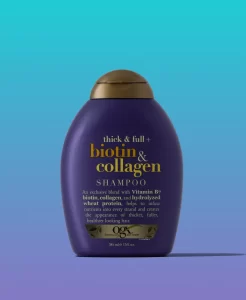
OGX Hair Loss Shampoo
Pura D’or Hair Original Gold Label Shampoo
This Pura D’or natural hair thinning shampoo blends 17 active ingredients to help reduce hair loss because of breakage. Their stress test showed that it can prevent hair thinning due to breakage compared to a regular shampoo.
They use ingredients like biotin, nettle, pumpkin seed and black cumin seed oil to increase volume, argan oil to nourish and strengthen the strand and cedarwood bark oil to help moisturise the hair. It’s free from harsh chemicals, is hypo-allergenic, vegan and cruelty free.
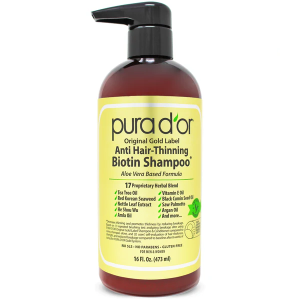
Pura D’or Hair Loss Shampoo
Nioxin Shampoo
Nioxin is a well-renowned American brand that is designed to improve scalp health and maximise the appearance of fuller thicker hair. Their products address hair thinning as well as issues like dandruff, dry scalp, sensitive scalp and hair breakage.
Nioxin shampoo is recommended as part of a system including a conditioner and leave-in scalp treatment which contains nicotinate. They recommend anyone suffering from genetic hair loss to consult with a specialist clinic to find the right hair loss treatment for them.
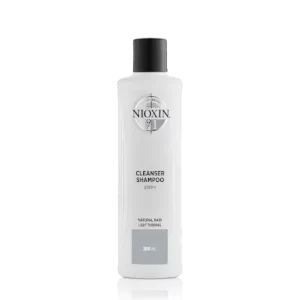
Nioxin Hair Loss Shampoo
Bondi Boost HG Anti–Hair Thinning Shampoo
This Bondi Boost Shampoo is designed for thinning and ageing hair types. It contains a phytoactive boosting blend of aloe vera, peppermint and rosemary to help battle thinning hair.
By naturally cleansing the hair and scalp, it stimulates scalp circulation and supports healthy hair follicles to grow. It’s natural and organic and is free from a host of nasties including silicone, parabens, sulphates and mineral oils.

Bondi Boost Hair Loss Shampoo
NAK Hair Revitalise Thinning Shampoo
NAK Hair’s Revitalise Thinning Shampoo aims to nourish, invigorate and rejuvenate to help prevent thinning hair. The botanical cleanser removes impurities and strengthens hair using ingredients like wheat protein, saw palmetto and peppermint oil.
It’s recommended as part of a three-step kit, including a conditioner and a mineral defence botanical spray.

NAK Hair Loss Shampoo
What causes hair thinning?
Hair loss and hair thinning can be caused by many factors. Some of these include:
- Genetics: Some people are more likely to develop hair loss conditions such as male and female pattern hair loss [6]. They can be inherited on either side of the family [7].
- Hormonal imbalances: Fluctuations in pregnancy, menopause or medical conditions can sometimes trigger hair loss [8].
- Stress and lifestyle: Psychological stress [9] and poor diet can play a part in weakening hair follicles.
- Autoimmune conditions: Autoimmune conditions [10] such as alopecia areata, alopecia universalis and alopecia totalis results from the immune system mistakenly attacking hair follicles. It leads to varying degrees of hair loss ranging from localised patches to complete hair absence on the body.
- Medical conditions and medications: Certain medical conditions such as poly cystic ovary syndrome (PCOS), lupus and medications like chemotherapy can lead to hair loss.
- Scalp problems: Including psoriasis, seborrhoeic dermatitis and dandruff can affect hair health.
- Hairstyling: Harsh chemicals, tight hairstyles and heat styling can lead to central centrifugal cicatricial alopecia [11] hair breakage.
Hair loss is not usually from one distinct cause but is due to a combination of many factors, both genetic and environmental. Because of this, your hair loss treatment may also need to include a combination of therapies that target each of the causes.
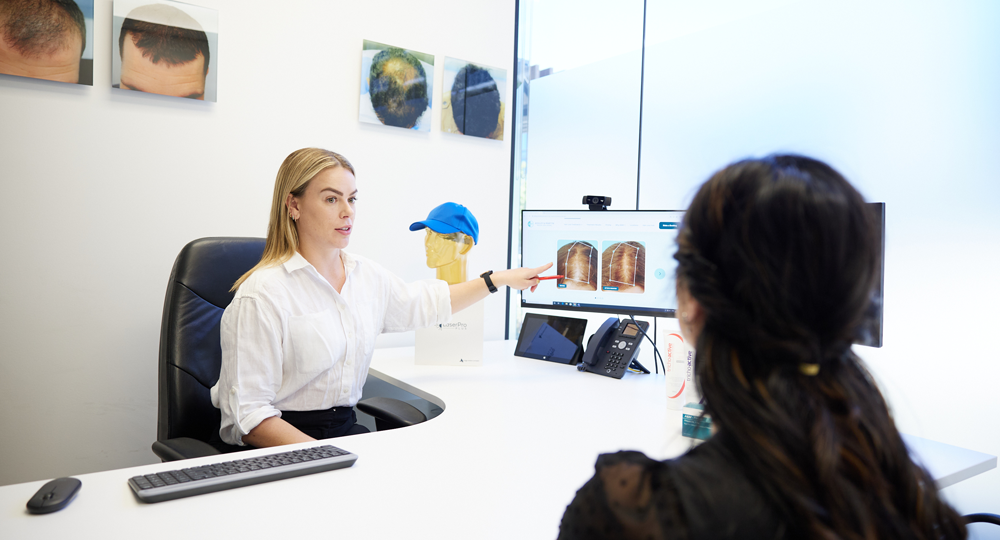
How do you decide what hair loss shampoo to try?
It’s important to remember everyone’s hair is different and everyone has different scalp or hair health concerns. Keeping your hair clean can strengthen existing hair, which is important when you’re undergoing a medical hair loss treatment.
When used in combination with other hair loss products, hair loss shampoos can play an important role in encouraging hair growth.
For more advice on finding the right products for your hair, speak to your dermatologist or you can book a free hair loss consultation through Ashley & Martin.
When should I seek medical help?
Everyone loses some hair per day. Losing around 100 hairs a day is considered normal [12]. However, if you’ve noticed excessive hair loss, thinning or baldness, you might like to talk to a medical professional or doctor about your options. Ashley & Martin’s hair loss specialists provide in-person consultations to get to the root causes of your condition and find the right treatment for you.
Ashley & Martin offer free hair loss assessments to help find the right treatment program for you.
About the Author
Caitlin Wright is an award-winning website copywriter, freelance journalist and online editor who writes for organisations and brands that care. She writes about topics from baby care to aged care and all the aspects of health and education in between.
References:
[1] https://jddonline.com/articles/new-insight-into-the-pathophysiology-of-hair-loss-trigger-a-paradigm-shift-in-the-treatment-approach-S1545961617S0135X/
[2] https://www.aad.org/public/diseases/hair-loss/types/female-pattern
[3] https://www.webmd.com/skin-problems-and-treatments/ss/slideshow-thinning-hair-tips
[4] https://pubmed.ncbi.nlm.nih.gov/30980598/
[5] https://www.sciencedirect.com/science/article/pii/S2352647515000477?via%3Dihub
[6] https://www1.racgp.org.au/ajgp/2018/july/female-pattern-hair-loss
[7] https://dermnetnz.org/topics/male-pattern-hair-loss
[8] https://www.ncbi.nlm.nih.gov/pmc/articles/PMC7432488/
[9] https://dermnetnz.org/topics/hair-loss
[10] https://dermnetnz.org/topics/alopecia-areata
[11] https://www.dermcoll.edu.au/atoz/central-centrifugal-cicatricial-alopecia-ccca/
[12] https://www.aafp.org/pubs/afp/issues/2009/0815/p356.html
